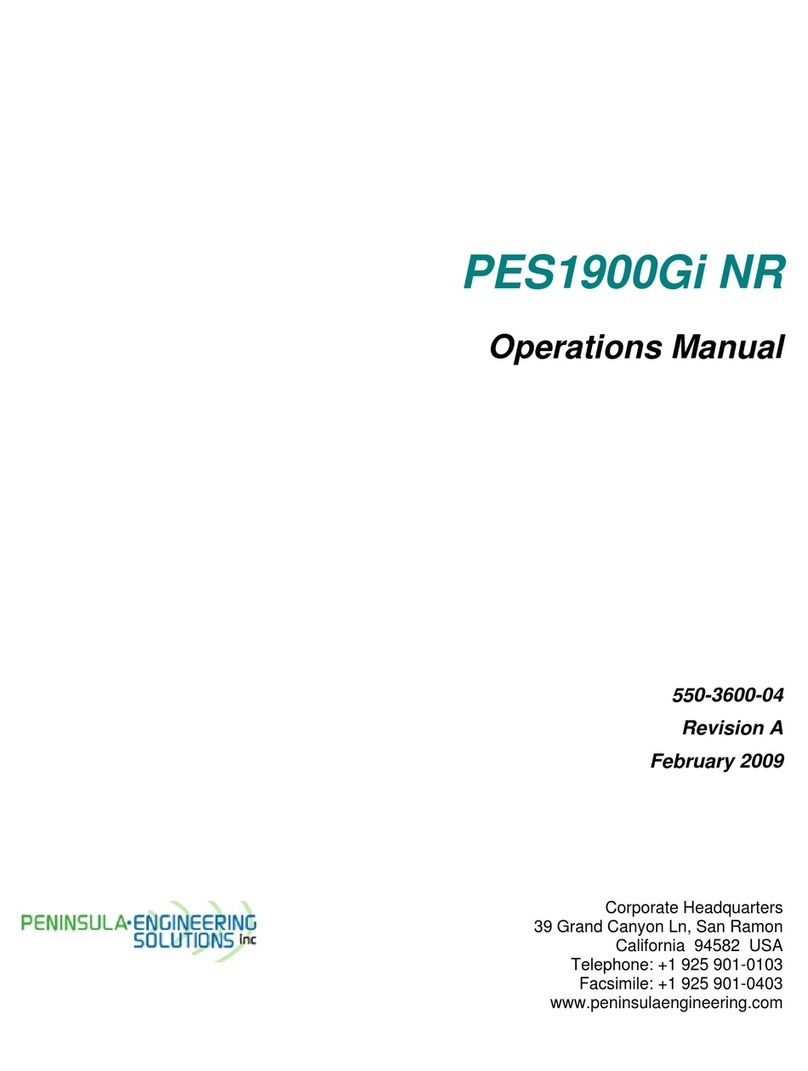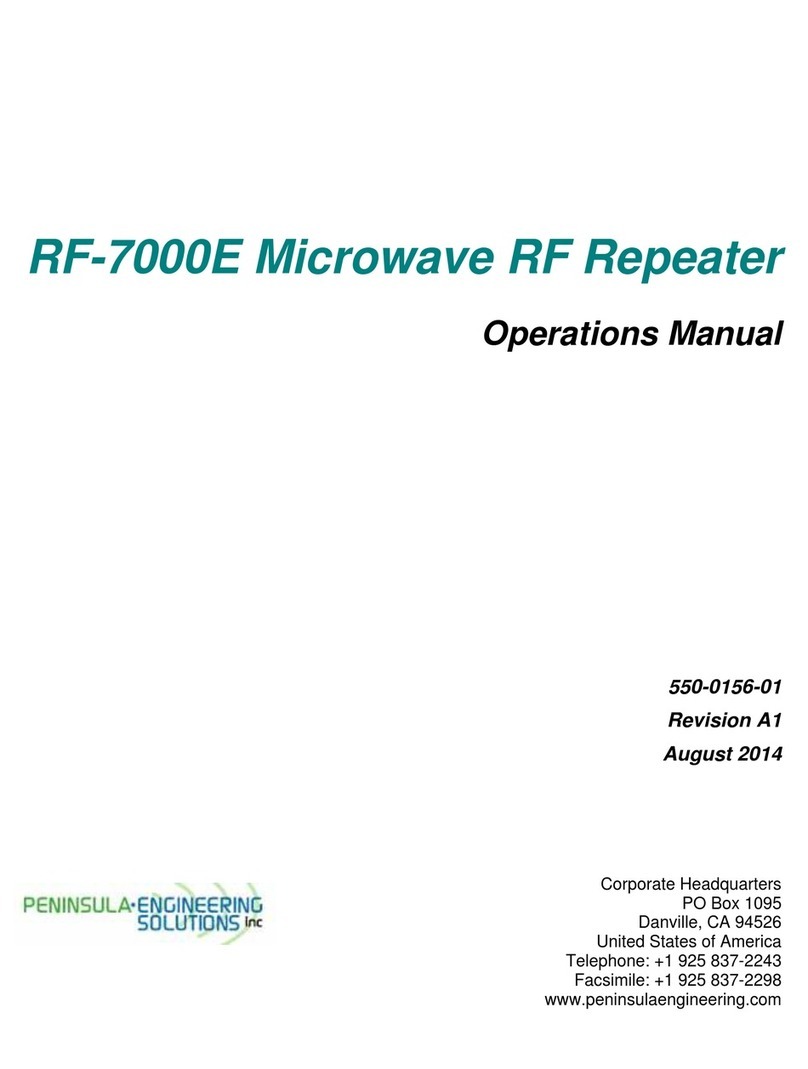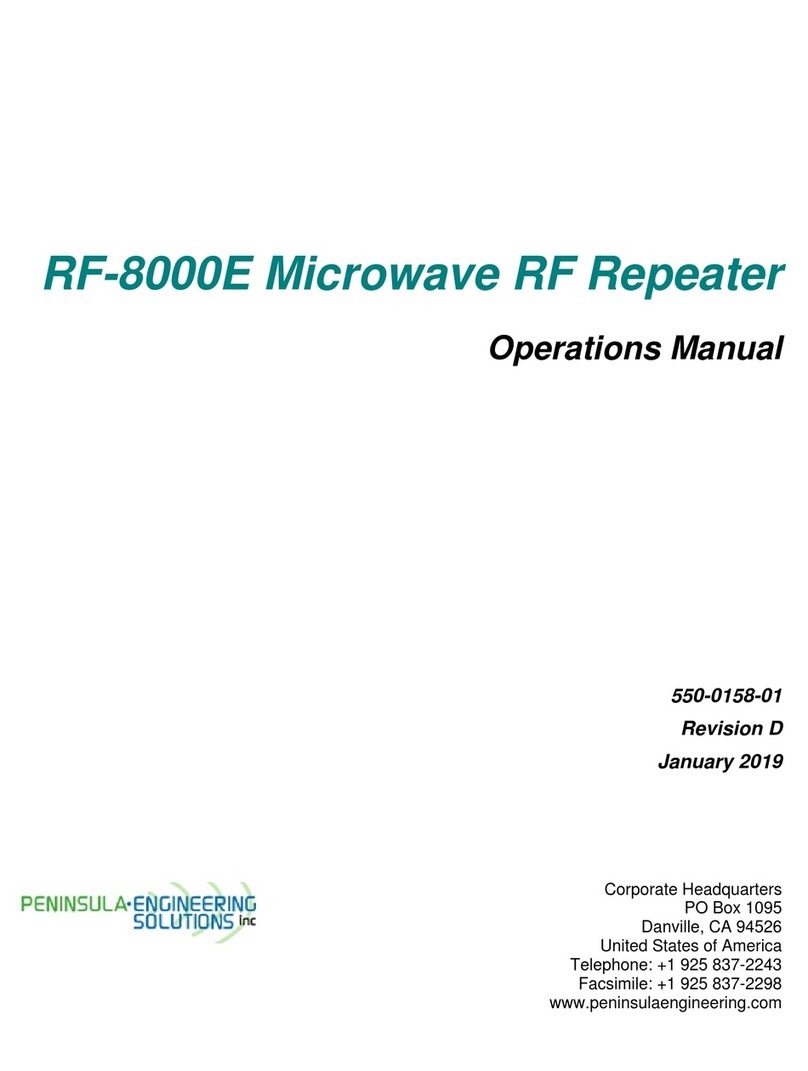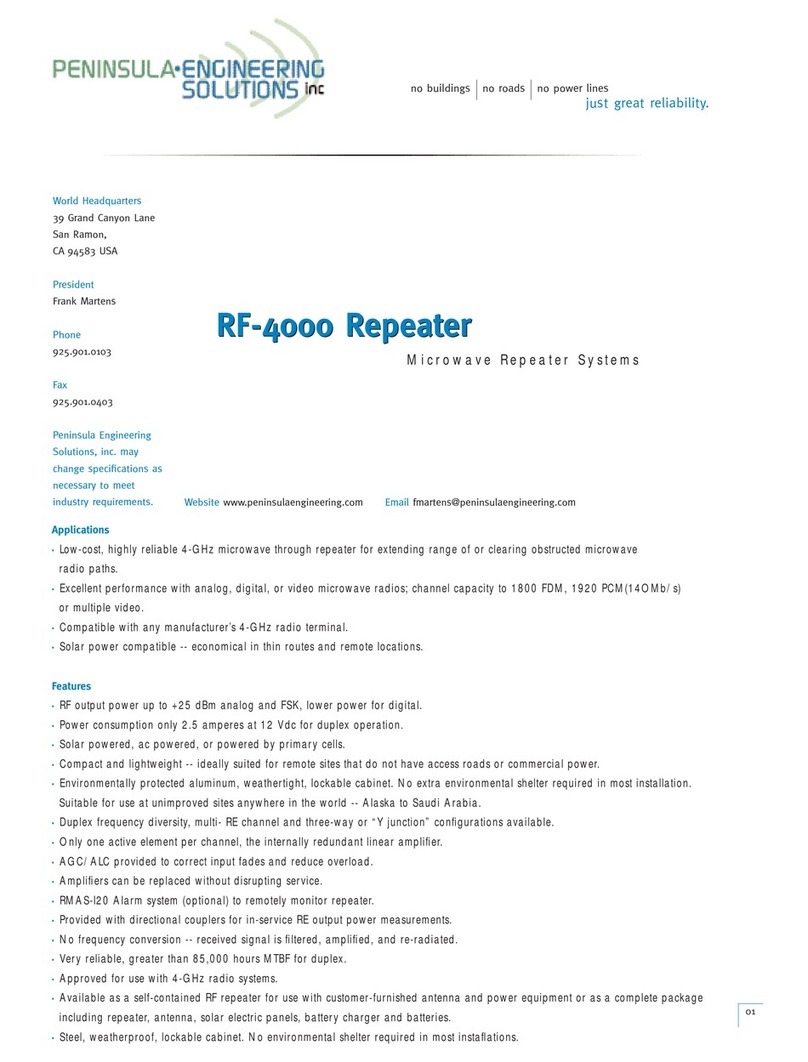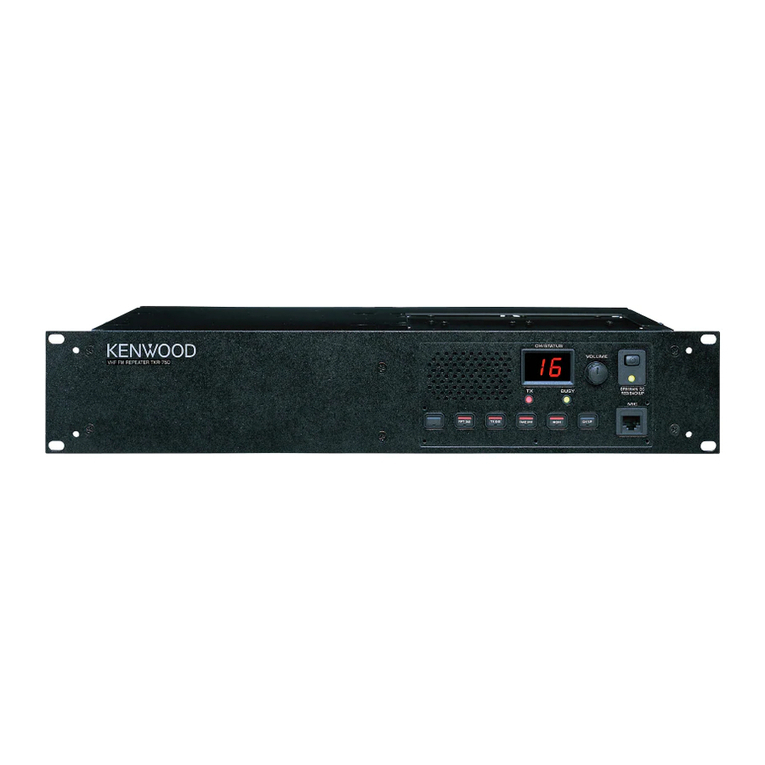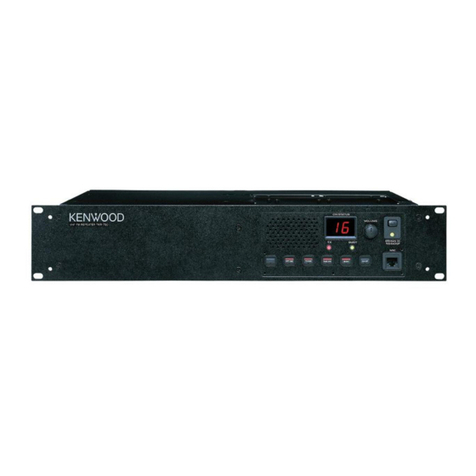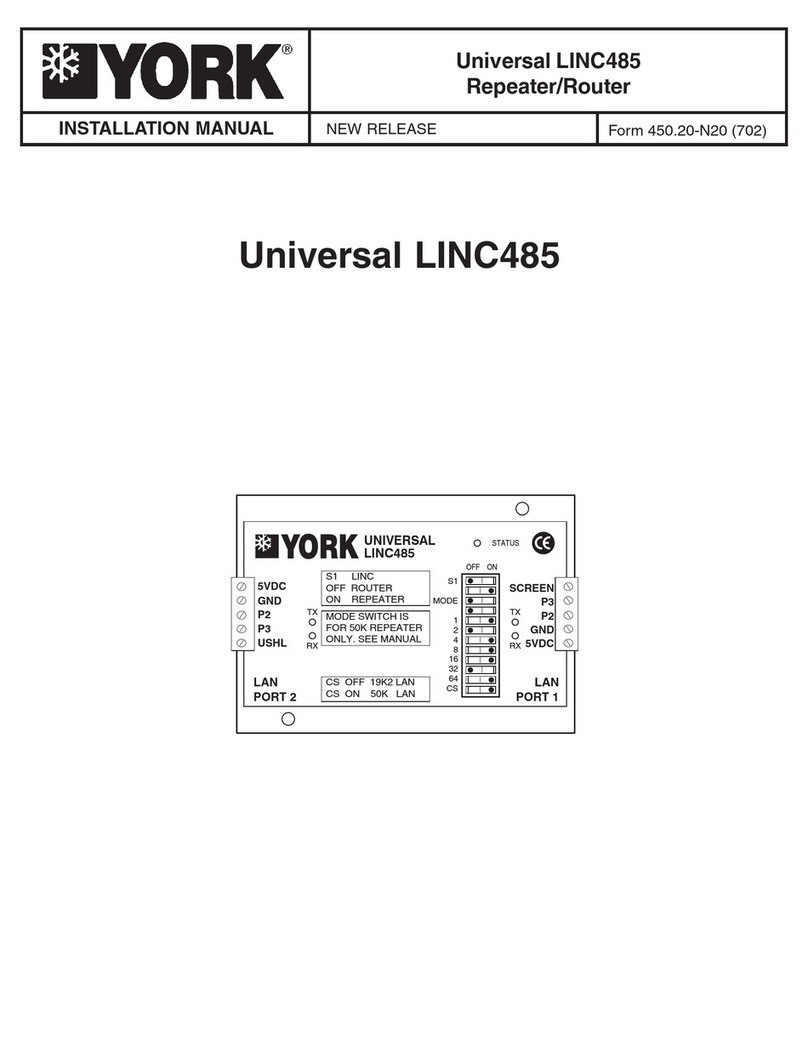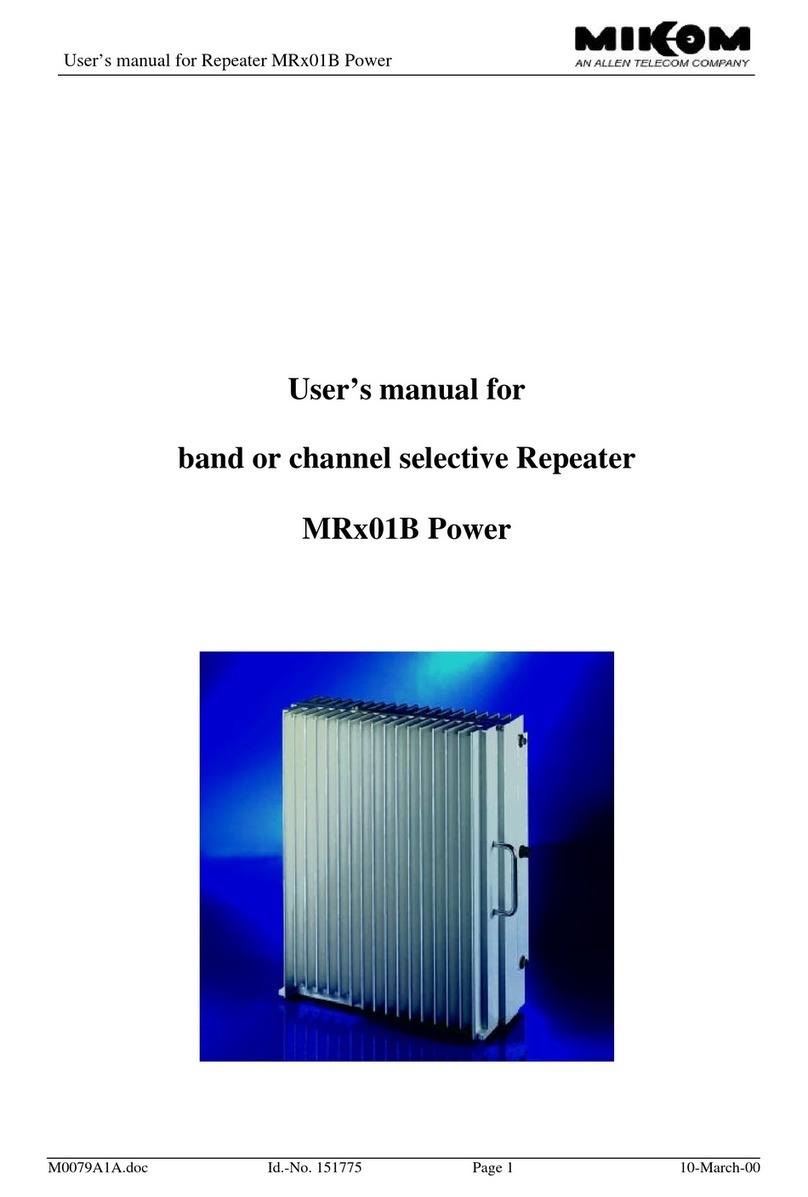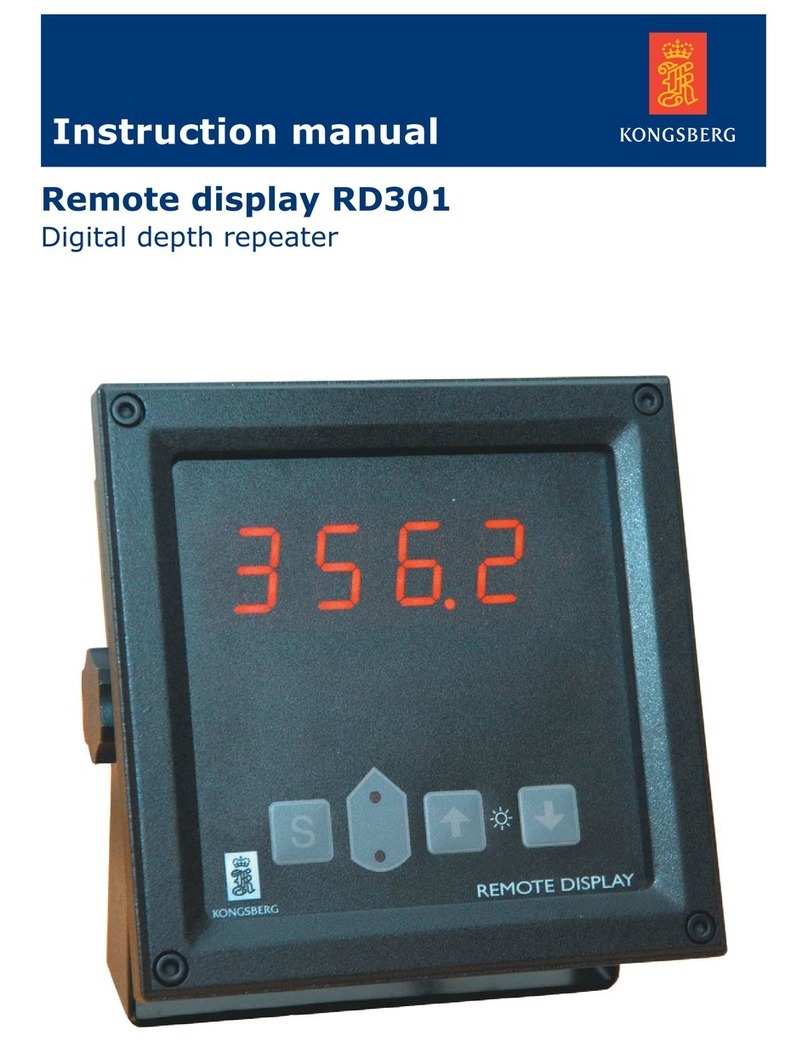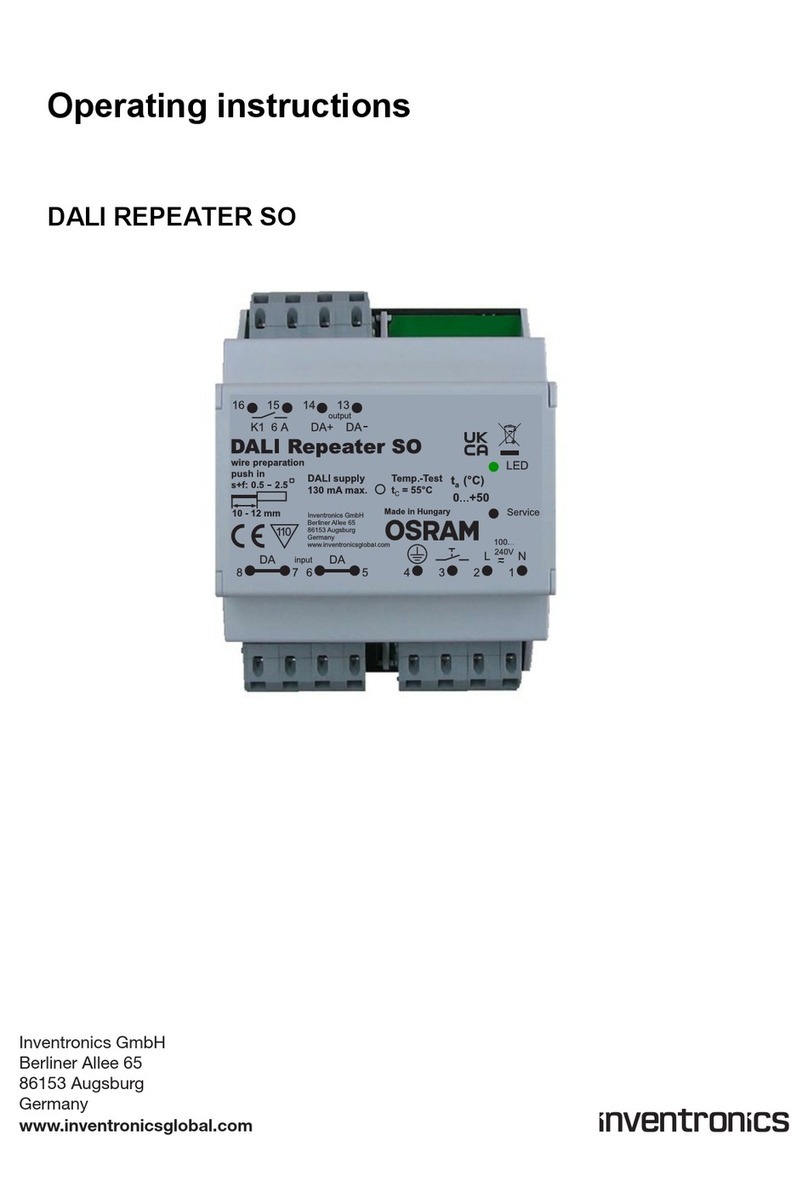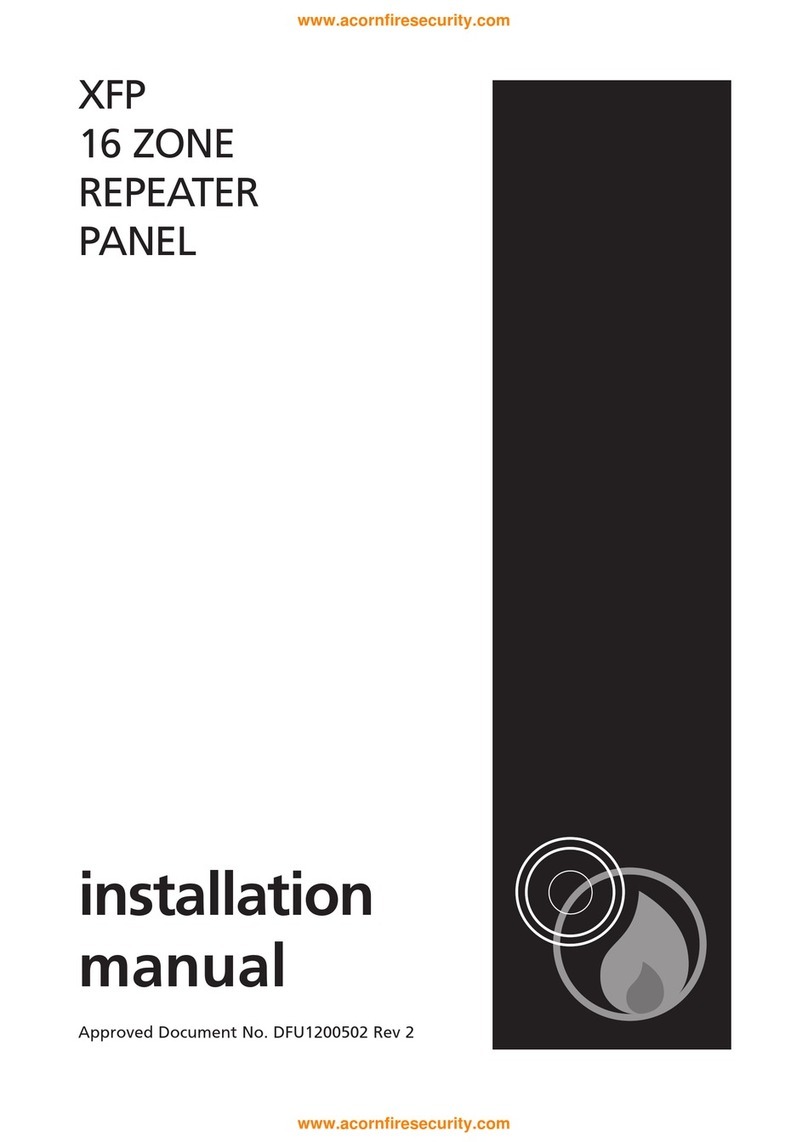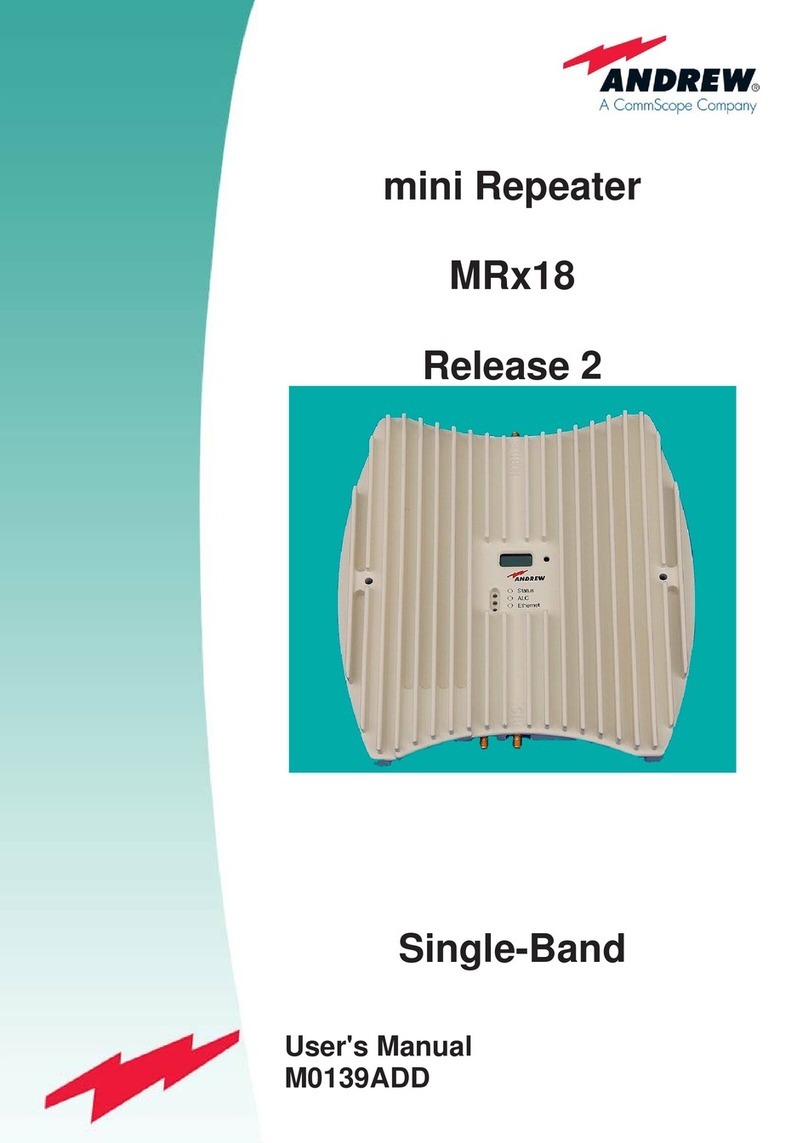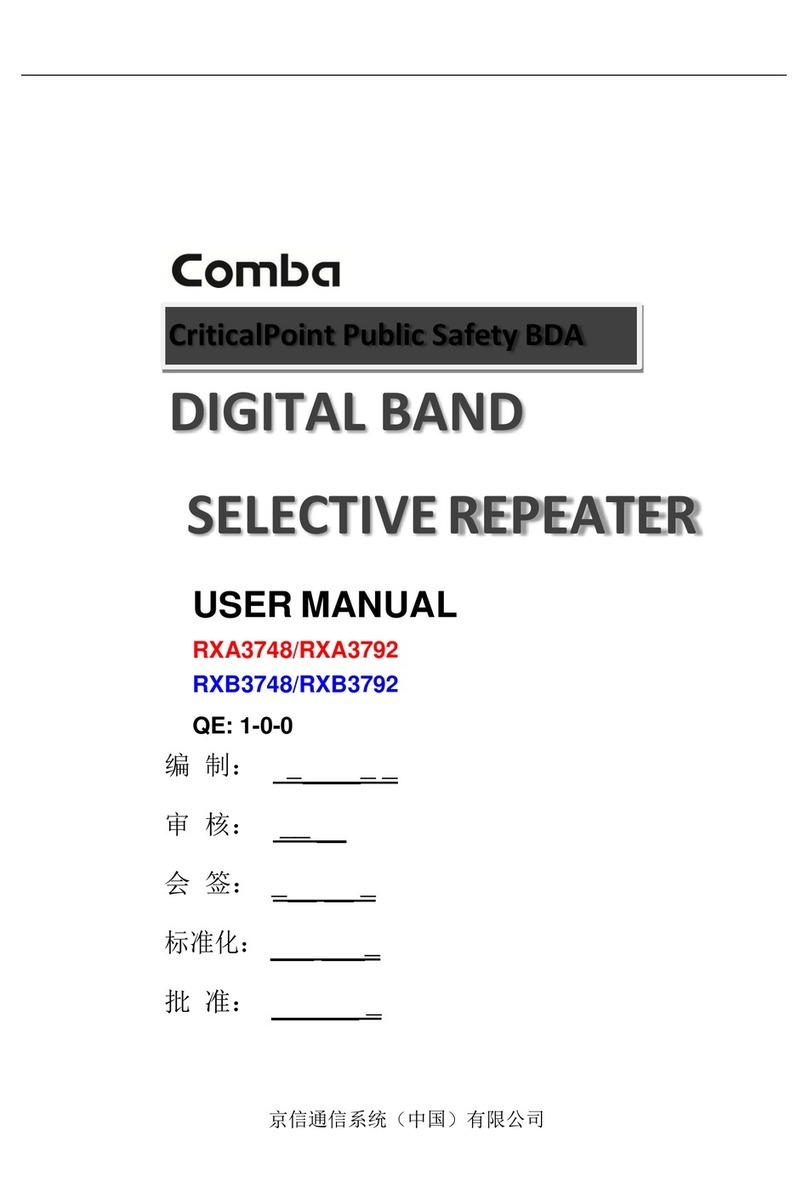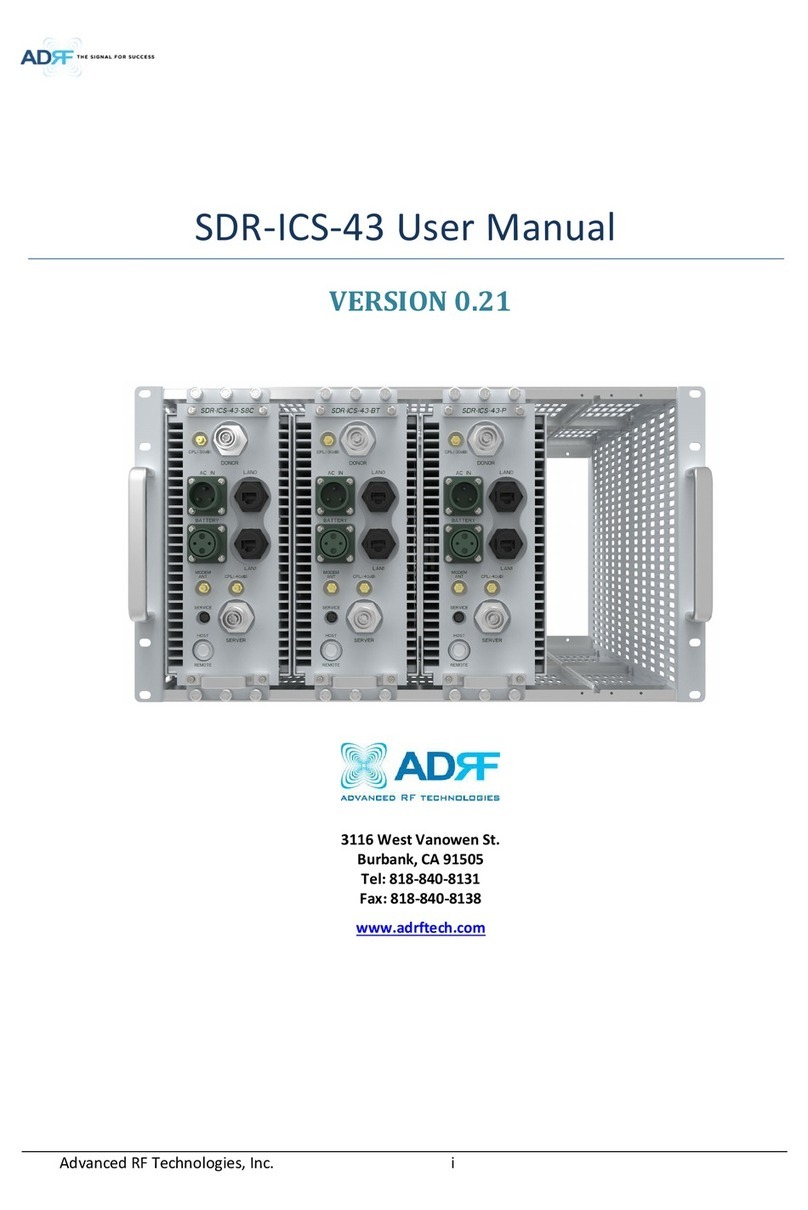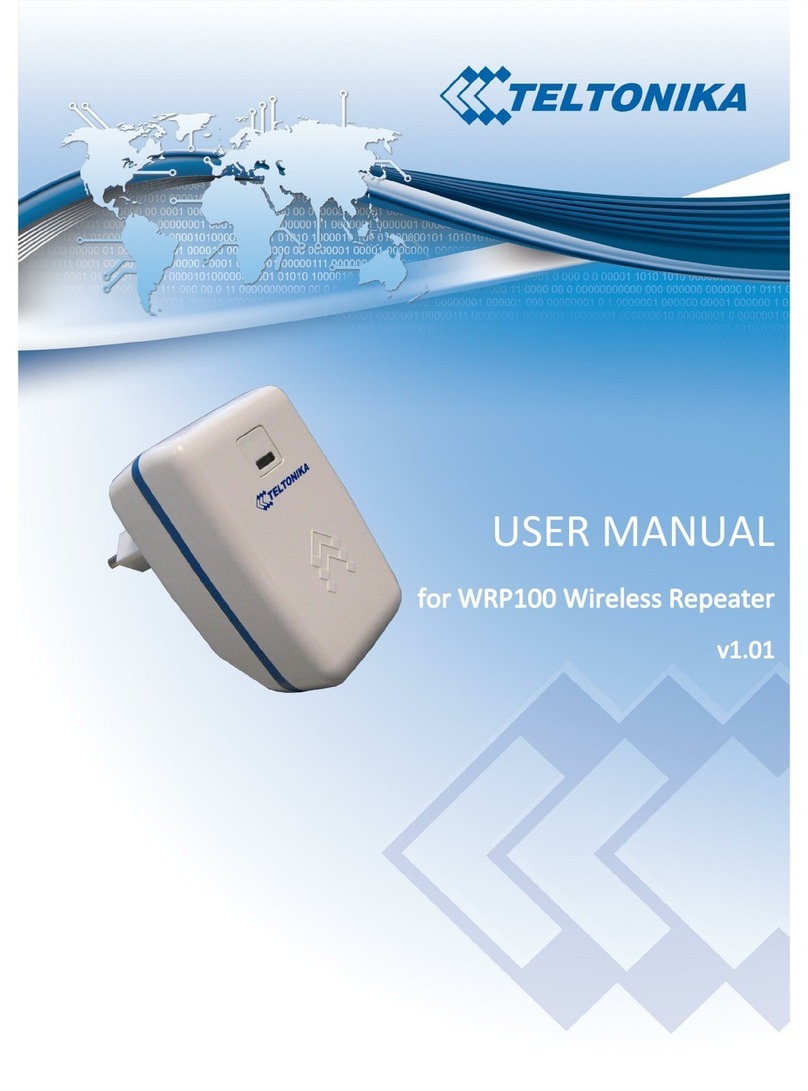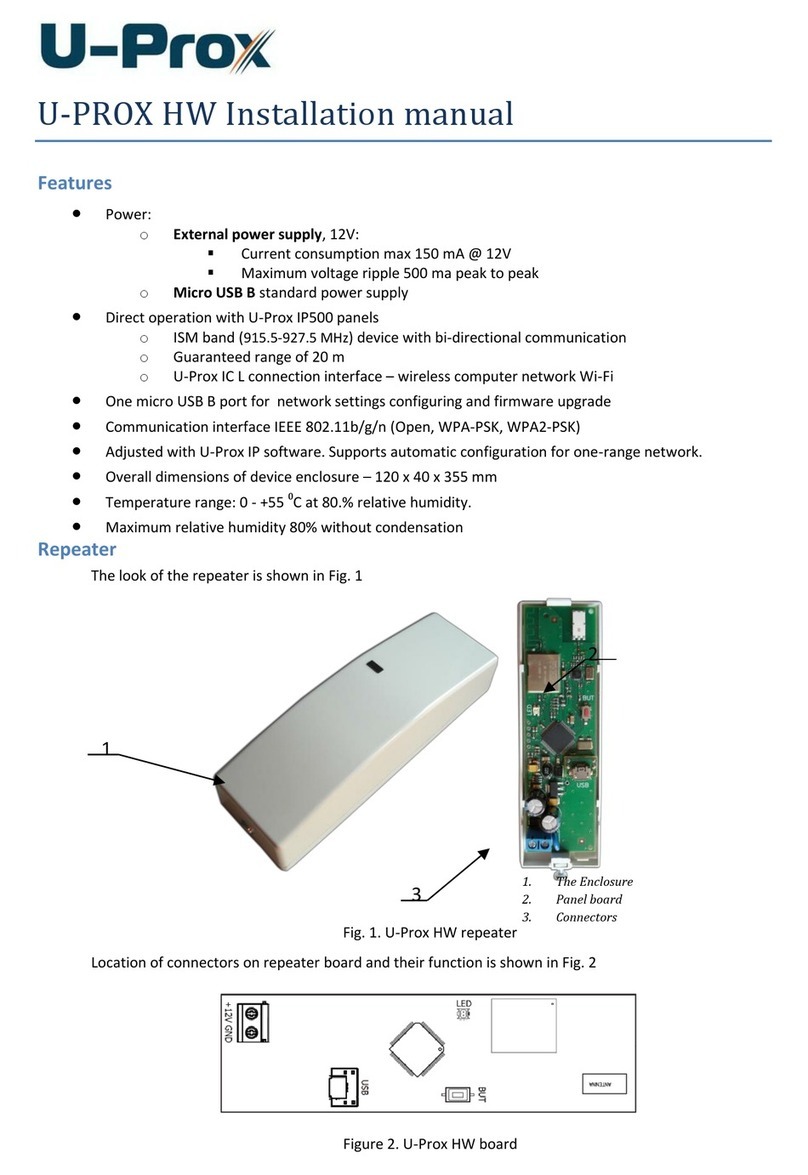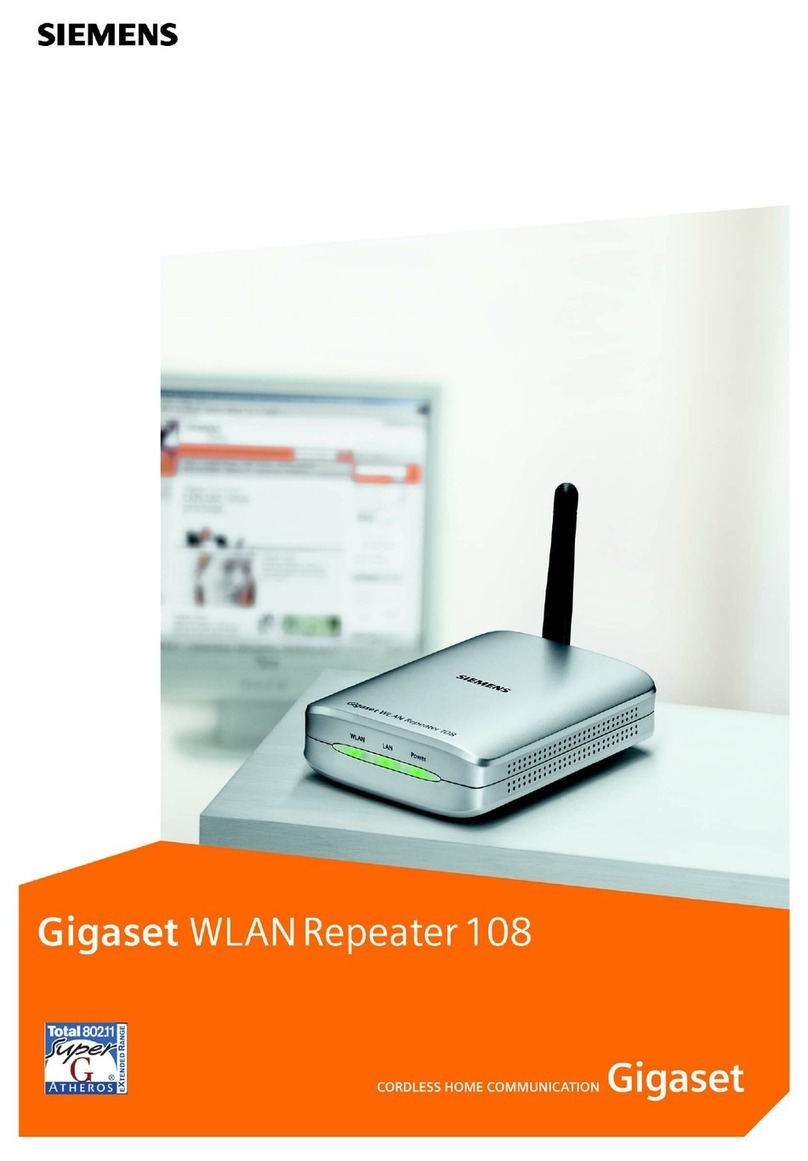1. GENERAL
• This Section provides information for the Peninsula
Engineering RF-2000E, RF-2000EW, RF Repeater Assembly;
hereinafter referred to as the RF-2000E /EW. The RF-2000E
/EW may be used with any manufacturer’s 2.0-GHz radio
operating in the 1.7-2.3 GHz frequency range to provide an
intermediate repeater.
• The RF-2000E /EW assembly is an RF through repeater
designed for remote loca-tions. No tuning is required, and
the use of highly reliable components and minimum ac-tive
circuitry eliminates most subsequent maintenance. The
repeater assembly consists of an equipment mounting panel,
contained in a aluminum, weatherproof cabinet. If desired,
the equipment mounting panel only may be mounted in a
standard 19-inch (483-mm) rack, or the complete assembly
may be wall-mounted. In most applications however, the
complete assembly is pole- or tower-mounted. Front views
of the repeater are shown in Figures 1.1 and 1.2.
• In addition to the RF-2000E /EW re-peater assembly,
Peninsula Engineering offers accessory equipment consisting
of antennas and mounting hardware, coaxial cable, batteries
and hardware, and an ac power supply with an integral
standby battery. The recommended antennas are parabolic
grid, solid or high performance types chosen per application.
2. FUNCTIONAL DESCRIPTION
Basic Repeater
• The RF-2000E/EW duplex repeater uses internally redun-
dant amplifiers for transmission in each of two directions.
Each amplifier is powered by two separate battery supplies
for added reliability. Bandpass filters and circulators,
which form a duplexer network, direct the received signals
to the amplifiers and combine the amplifier outputs with
the received signals to a common antenna port for transmis-
sion in each direction (see Figures 2.1~2.6).
• The received signal from “A” antenna, identified as fre-
quency “f1,” connected through N(male) to N(male) jumper
supplied, enters the repeater panel via the panel mounted
RF-2000E/EW Repeater
RF-2000E/EW Repeater
type N (f) connector and is then fed to a branching circula-
tor. From the circulator, the f1 signal is passed to an isolator
and then to the f1 receive bandpass filter. The bandpass filter
passes the f1 signal to a second isolator and (optional) f1
receive pad and then to amplifier A1. The (optional) delay
equalizer assembly just before the input port of the amplifier
will route the signal via a circulator to delay equalizer
which will correct the group delay within the specification.
The signal then is routed back to the main route via the
circulator into the amplifier. The amplified f1 signal passes
to the (optional) f1 transmit pad. From the transmit pad,
the f1 signal then passes the isolator and the f1 transmit
bandpass filter to the branching circulator and then to the
panel mounted type N(female) connector for connection to
“B” antenna through the second N(male) to N(male) jumper.
• In the other direction, the received signal from “B” antenna,
identified as frequency “f2,” enters the repeater panel via the
coax jumper to the panel mounted type N(female) connector
and is then fed to a branching circulator. From the circulator,
the f2 signal is passed to an isolator and then to the f2 receive
bandpass filter. The bandpass filter passes the f2 signal to
a second isolator and (optional) f2 receive pad and then to
amplifier A2. The (optional) delay equalizer assembly just
before the input port of the amplifier will route the signal via
a circulator to delay equalizer which will correct the group
delay within the specification. The signal then is routed back
to the main route via the circulator into the amplifier. The
amplified f2 signal passes to the (optional) f2 transmit pad.
From the transmit pad the f2 signal then passes through an
isolator and the f2 transmit bandpass filter to the branching
circulator and then to the panel mounted type N(female)
connector for connection to “A” antenna through the coax
jumper supplied.
• Receive pads reduce the repeater re-ceive signals to
approximate the recommended input level. The transmit pads
reduce the output signal levels of the repeater to prevent
overloading of the terminal receiver in a short path. Pads are
mounted on input and output of amplifiers. Table 2.1 shows
the nominal input and output power level for single channel
Level 1 duplex configuration. Detail information for other
configurations is in Technical Summary at the be-ginning of
this manual.
07
